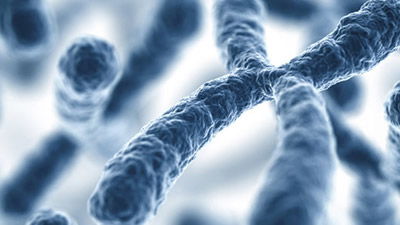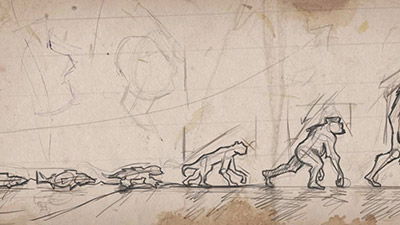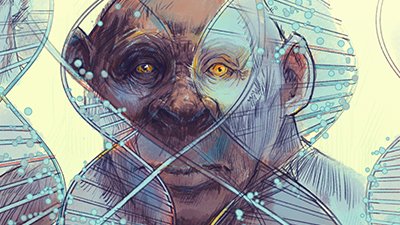
Tie of Human Pregnancy to Bipedality Becomes Extinct
Convenient evolutionary answer tying human pregnancy to bipedality becomes extinct.
News Source
- Scientific American blog: “How to Apply an Evolutionary Hypothesis About Gestation to Your Pregnancy”
Everyone knows human pregnancy is supposed to last nine months, but why is that? And why are newborn humans so helpless? The traditional evolutionary explanation just bit the dust. The usual explanation described the 9-month human gestation as an evolutionary trade-off that evolved to solve competing problems: the need to walk upright and the need to grow a bigger brain. This so-called “obstetrical dilemma” (OD) hypothesis has long outlasted research suggesting its retirement.
The traditional explanation seemed—to evolutionists—“plausible” even though it was based on “speculative tales.” Even the famous evolutionists Stephen J. Gould and Richard Lewontin have been critical of such criteria for accepting explanations.1 The tale seemed plausible because evolutionists have painted a picture of human evolution from ape-like ancestors with the need to evolve bipedal locomotion and bigger brains. Evolutionists consider these features to be the hallmarks of human evolutionary history. In imagining a reason for humans to give birth to helpless babies, they have maintained that longer gestation to grow bigger brains would require broader hips—a pelvic size that would surely (they thought) make it difficult to run and walk efficiently. The authors of a recent study published in the Proceedings of the National Academy of Sciences, “Metabolic hypothesis for human altriciality,” write that this idea is “intuitively appealing, but is it correct?”2
In their paper, the authors point out that three decades of research have consistently shown that the broader hips of women do not decrease the efficiency of locomotion.
Anthropologist and lead author Holly Dunsworth writes, “Notice how the OD skillfully ties together many unique or fascinating phenomena in human evolution such as human bipedalism, human encephalization, hellish human childbirth, helpless human babies, male-biased human athletic ability, and broad ladies’ hips. And we haven’t proven this popular story wrong. But our paper throws some serious doubt on it, demonstrating how little of it holds up to current evidence.”
In their paper, the authors point out that three decades of research have consistently shown that the broader hips of women do not decrease the efficiency of locomotion. As they write, genuine bipedal locomotion requires that “The hip abductors (M. gluteus medius and minimus) activate during single-leg-support phase during walking and running to prevent the trunk from rotating (falling) away from the stance leg.”7 Studies have long concluded that broadening the pelvis has no detrimental effects on walking or running. Yet until Dunsworth’s research suggested a more plausible evolutionary reason for the 9-month plan, the faulty explanation stuck.
Dunsworth says, “I see the world through evolution goggles.” She has no intention of disparaging an evolutionary explanation. She just proposes a different one. Her group discovered that extending human gestation long enough to achieve a brain as developed as a newborn chimp’s—relative to its full-grown size—would not increase a baby’s head size beyond the typical human pelvic capacity. As she points out, no one has ever thought a baby’s head size sent a “let me out” signal to the mother. But the appealing little story stuck for lack of a better one.
What her group did discover is that the trigger for human pregnancy to end at nine months is the same signal that triggers the end of gestation in mammalian animals: the baby’s energy demands exceed the capacity of the mother to supply them. As a result, metabolic stress triggers hormonal signals that tell a woman’s body “it’s time.”
Specifically, mammals cannot sustain a metabolic rate above about 2 to 2.5 times their basal metabolic rate (BMR) for very long. The limit for humans is about 2. Typically, by the sixth month of pregnancy, a woman’s metabolic rate reaches about double her BMR, and it remains so until the ninth month. At that point, the typical pregnancy begins demanding more energy than a woman has to give, and the signals that trigger labor to begin are given.
Dunsworth sees the world through “evolutionary goggles,” has an evolutionary worldview, and applies the evolutionary explanation to everything. The authors clearly consider their revelation to be an evolutionary explanation for the 9-month limit in humans. However, there is nothing evolutionary about the explanation at all. Their discovery is simply a reason—a reason we are “done at nine.” But we can be thankful that they do think their explanation is an evolutionary alternative to the traditional evolutionary one. Otherwise, the myth of the “obstetrical dilemma” would resist death for decades to come.
As to why many babies have a tight fit, the best the authors have to offer is that the improved diet of humans over the eons has led to bigger babies, and evolution hasn’t had time to catch up. But there is no evolutionary issue here either: humans with bigger babies and bigger hips would still be humans.
In reality, our Creator designed humans and each kind of animal with the intricate structures and physiological functions they needed. This research has just shed a little more light on the reason we deliver our helpless babies at nine months. God’s design doesn’t end with the physiological limit of nine months. The amazing design of the human pelvis is uniquely engineered to guide a baby’s head through the perfect path to the outside world. For more about the marvelous design of the human female pelvis suitable for walking, having babies, and keeping our “insides” in despite gravity, see “The Evolution of Childbirth?” And for a discussion of pain in childbirth see “Is It Wrong to Interfere with the Pain of Childbirth?” and “Understanding the Answer in Genesis 3:16.”
For More Information: Get Answers
Remember, if you see a news story that might merit some attention, let us know about it! (Note: if the story originates from the Associated Press, FOX News, MSNBC, the New York Times, or another major national media outlet, we will most likely have already heard about it.) And thanks to all of our readers who have submitted great news tips to us. If you didn’t catch all the latest News to Know, why not take a look to see what you’ve missed?
(Please note that links will take you directly to the source. Answers in Genesis is not responsible for content on the websites to which we refer. For more information, please see our Privacy Policy.)
Footnotes
- Gould and Lewontin in 1979 criticized the acceptance of convenient adaptation-based explanations, saying that “reliance on plausibility alone as a criterion for accepting speculative tales” should be discouraged. S.J. Gould and R.C. Lewontin “The spandrels of San Marco and the Panglossian paradigm: A critique of the adaptationist programme.” Proceedings of the Royal Society of London, Series B 205, no. 1161 (1979): 581–598. rspb.royalsocietypublishing.org/content/205/1161/581.full.pdf+html
- H. Dunsworth et al., “Metabolic hypothesis for human altriciality,” Proceedings of the National Academy of Sciences published online 29 August 2012 doi/10.1073/pnas.1205282109

Answers in Genesis is an apologetics ministry, dedicated to helping Christians defend their faith and proclaim the good news of Jesus Christ.
- Customer Service 800.778.3390
- Available Monday–Friday | 9 AM–5 PM ET
- © 2025 Answers in Genesis



